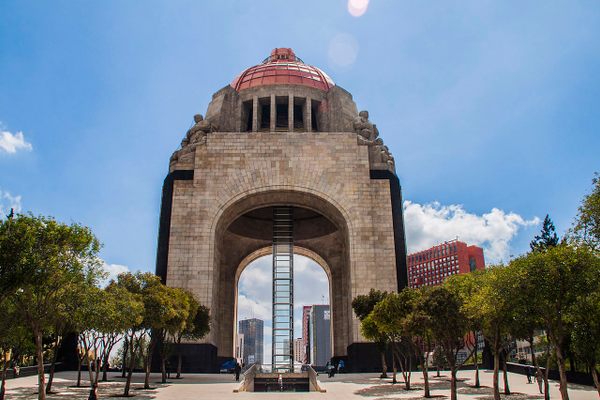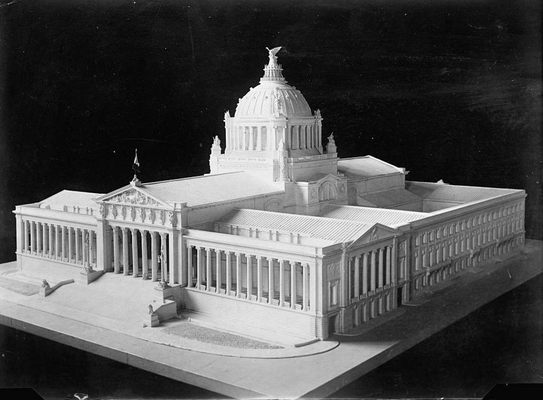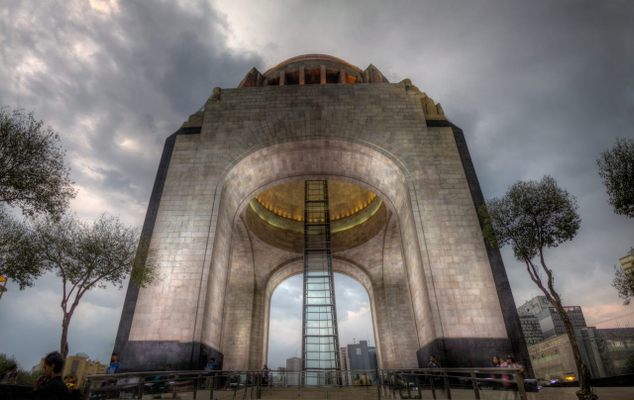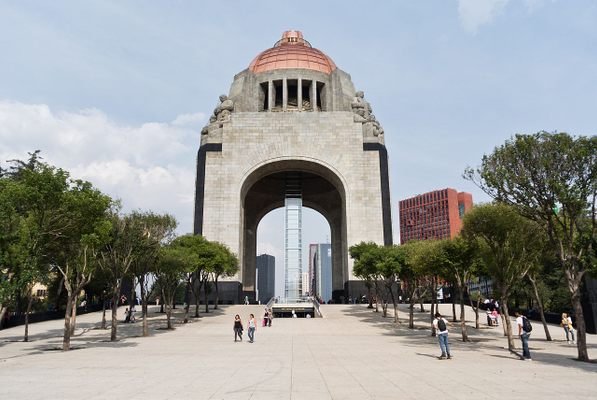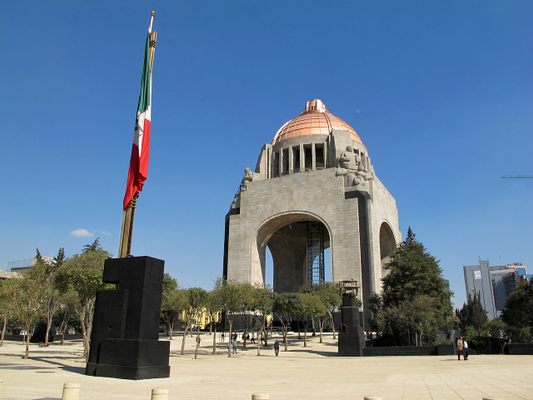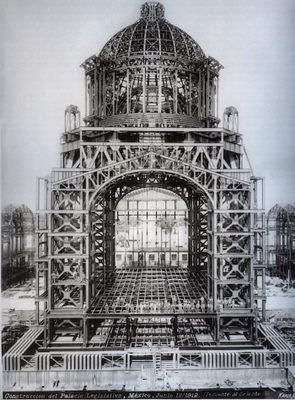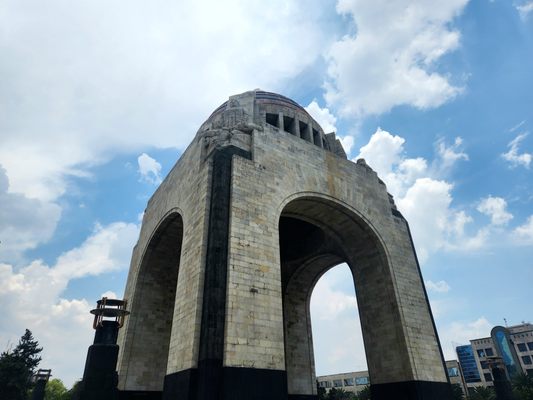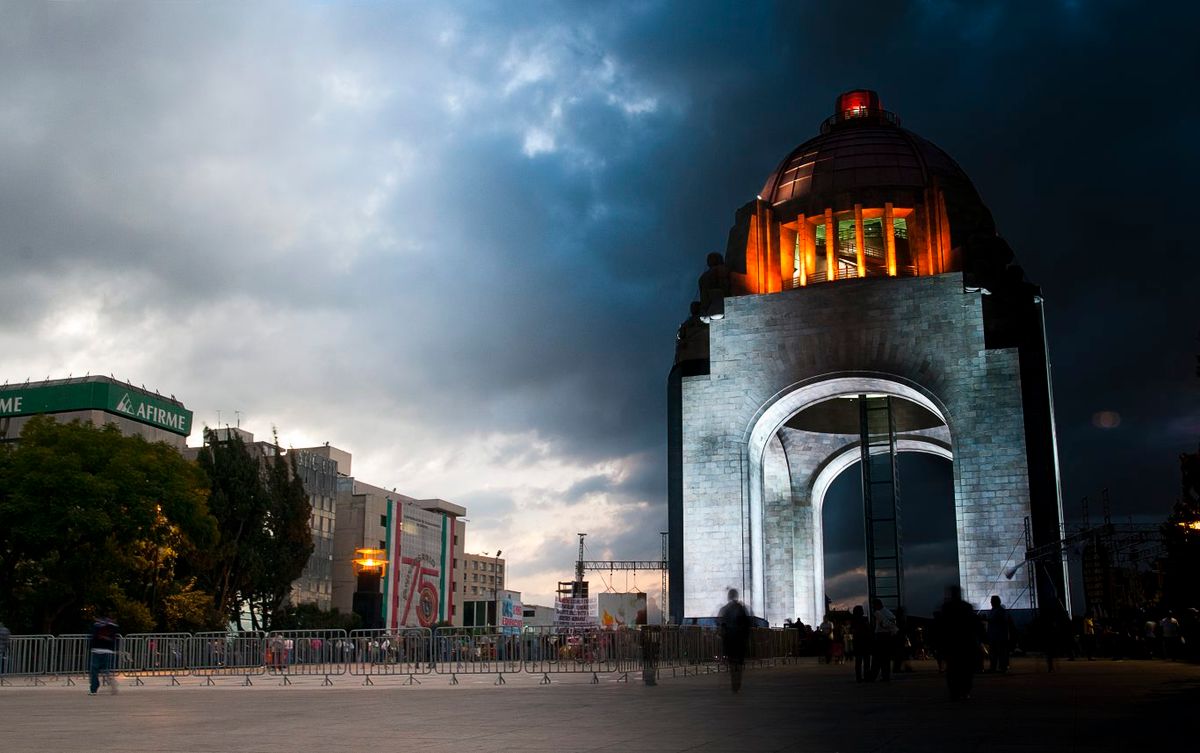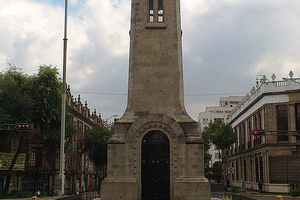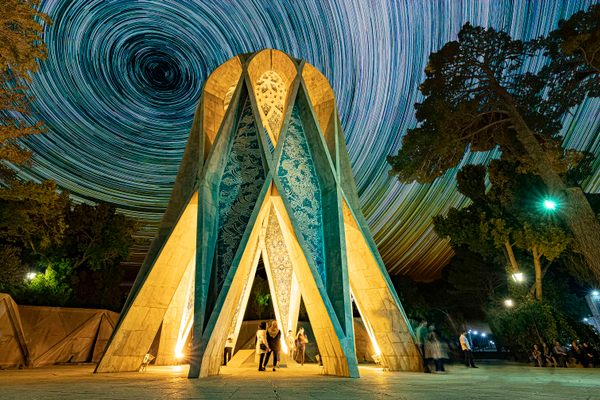About
At 220 feet tall, the Monumento a la Revolución (Monument to the Revolution) is the tallest triumphal arch in the world. And while many people admire it as they explore downtown Mexico City, not everyone realizes how much is going on inside this huge monument to the Mexican Revolution.
If things had gone as planned, the Monumento a la Revolución would never have been built at all, at least not in its present form. When construction began in 1906, it was not for a monument but rather for the Palacio Legislativo Federal (Federal Legislative Palace). This grand palace would have housed the various legislative bodies of the Mexican Federal Republic, but the project was abandoned in 1912 because of the Mexican Revolution.
For more than two decades, the massive metal structure that served as the core of the unfinished building stood rusting in Mexico City. Until, that is, Mexican architect Carlos Obregón Santacilia came up with an interesting proposal: he would transform the structure into a monument to the heroes of the Mexican Revolution.
Santacilia used the palace's existing cupola structure as the skeleton for his monument, but fleshed it out with monumental architecture that combined Art Deco and Mexican socialist realism styles. So while the cupola itself looks very much as it did in the original designs for the building, it sits atop four massive stone arches rather than on top of a palace. And with a total height of 220 feet, it is the tallest triumphal arch in the world (the second tallest is the Arch of Triumph in Pyongyang).
The Monumento a la Revolución, understandably, is now one of the most famous landmarks in Mexico City. But while thousands of people walk past it and admire it on a daily basis, not everyone knows what’s going on inside—and below—the world’s tallest triumphal arch.
To start with, the monument functions as a mausoleum for some of the most famous revolutionary figures in modern Mexican history. The tombs are contained inside the bases of each of the four main pillars, and include the remains of Francisco I. Madero, Plutarco Elías Calles, Francisco “Pancho” Villa, and Lázaro Cárdenas.
When the monument was extensively renovated in 2010, more elements were added. A vertigo-inducing glass elevator now runs up through the central axis of the monument, all the way up to an observation deck inside the cupola. A whole section of the original structure was also deliberately left exposed and is now open to the public via short tours, allowing visitors to marvel at the massive steel beams and trusses that hold the whole thing together.
Below the monument, meanwhile, lies an exhibition space and art gallery, as well as the National Museum of the Revolution, which covers more than half a century of Mexican history from the Constitution of 1857 to the post-revolutionary government of 1920.
Related Tags
Know Before You Go
The Monumento a la Revolución is located on the Plaza de la República in downtown Mexico City, which sits in the heart of a triangle fomed by three main roads: the Paseo de la Reforma, Avenida de los Insurgentes, and Avenida Puente de Alvarado. Nearby transportation stops include the Plaza de la República Metrobús stop, and the subway stops at Revolución and Hidalgo. The monument is open Monday to Thursday from midday to 8 p.m.; Friday and Saturday from midday to 10 p.m.; and Sunday from 10 a.m. to 8 p.m. It’s recommended that you enter the monument an hour and a half before the closing time if you want to see everything. Complete access tickets cost M$90 (about $5 US); if you just want to go up the glass elevator to the observation deck it costs M$60 ($3 US).
Yucatan: Astronomy, Pyramids & Mayan Legends
Mayan legends, ancient craters, lost cities, and stunning constellations.
Book NowCommunity Contributors
Added By
Published
June 12, 2019
Sources
- http://www.mrm.mx/esp/mrm_03_01_b.html
- https://www.ngenespanol.com/el-mundo/cual-era-el-plan-original-detras-del-monumento-a-la-revolucion/
- https://www.mexicodesconocido.com.mx/quien-esta-enterrado-en-el-monumento-a-la-revolucion.html
- http://www.mexconnect.com/articles/3945-mexico-city-s-revolution-monument-monumento-a-la-revolucion
